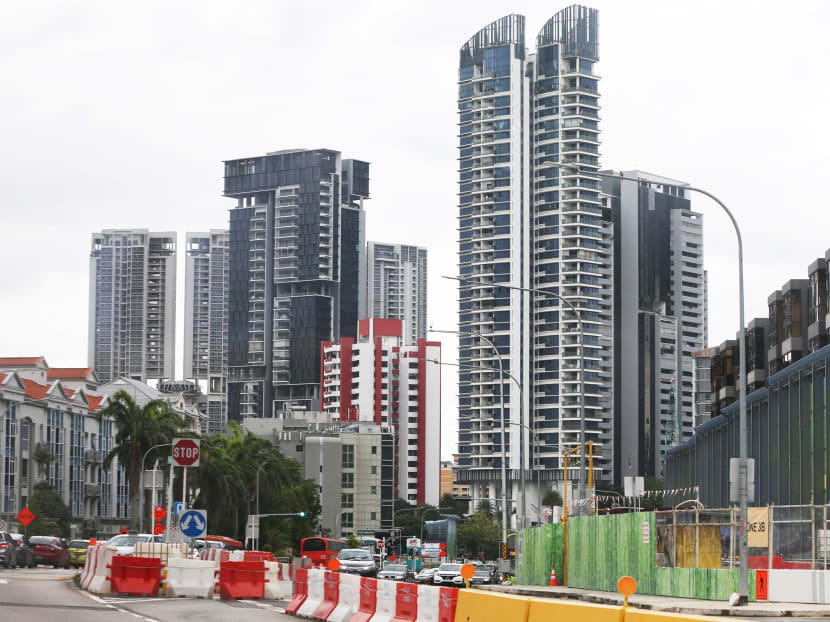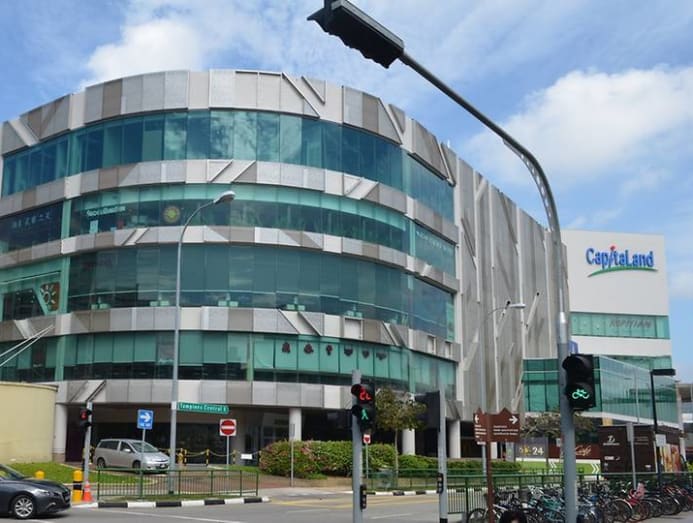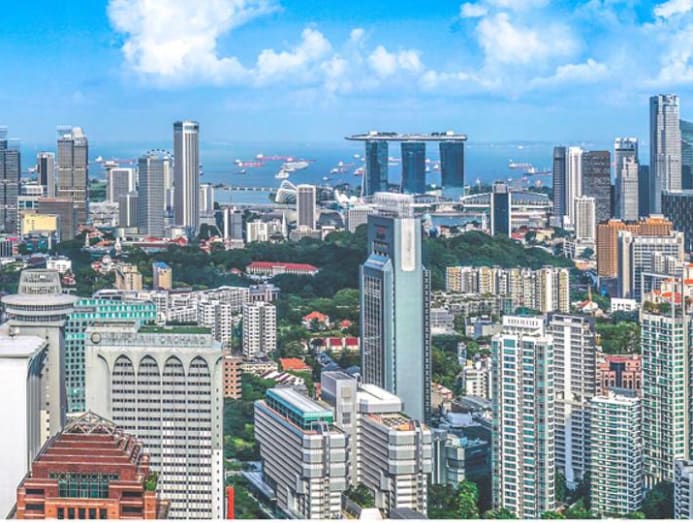Commentary: Why is the Singapore REIT market going so strong after two years of COVID-19?
Familiarity with the Singapore property market and high money supply will continue to make S-REITs an attractive asset class, says OCBC’s Ezien Hoo.

SINGAPORE: Singapore real estate investment trusts or S-REITs have emerged as a resilient segment of the local stock exchange in the past two years.
Traditionally a key pillar of the portfolios of individual investors in Singapore, the iEdge S-REIT Index, regarded as the S-REIT benchmark, reported a total return of 5.2 per cent since the start of 2020 to Nov 17.
This was despite S-REITs raising new equity from unitholders, creating additional units and leading to potential dilution risk. In the past 23 months, S-REITs raised a total of S$8 billion through placements and rights issues led by mega-issuances from Ascendas Real Estate Investment Trust and Frasers Logistics and Commercial Trust.
Most S-REITs largely maintained their dividends, compensating for the fall in unit prices in this period.
Global financial markets including S-REITs initially crashed when COVID-19 became a pandemic, with investors panicking and selling liquid financial assets. For investors daring and savvy enough to put money to work during the trough in end-March 2020, total returns from capital gains have been a whopping 57 per cent.
Despite headlines on troubles in the retail space and how work-from-home has made offices redundant, occupancies measured by leases have remained high for S-REITs holding shopping malls and offices in Singapore, with little problems in rental collection, even if fewer are using these spaces.
In the hardest hit hotel sector, the fall in physical property asset value was contained to less than 10 per cent at a portfolio level among the S-REITs tracked by OCBC, a good outcome despite the pandemic curbing travel.

Hospitality REITs will likely need time to recover and could do better in a 24-month timeframe as borders reopen further.
S-REITs today generate a significant volume of trading activity for the stock exchange - about one-fourth of the daily turnover before COVID-19. Primary equity markets in Singapore also skew towards S-REITs.
S-REITs, at S$110 billion, represents 12 per cent of Singapore’s whole equity market by market cap – a figure that is 6 per cent for Australia and only 2 per cent for Japan, the other two top REIT markets in the Asia-Pacific with large domestic economies.
WHY S-REITS STILL ATTRACT SO MANY INVESTORS
The top-performing Singapore stock in the past 23 months goes to iFAST Corporation, an investment products distribution platform, which generated total returns of 771 per cent during this time, superseding the Bloomberg Bitcoin Galaxy Index at 750 per cent.
This is lower than the 1,131 per cent on the Bloomberg Galaxy Crypto Index tracking cryptocurrencies.
Still, S-REITs and the Singapore commercial property market continue to attract significant investor attention.
Investors in Singapore are very familiar with the nuts and bolts of running a property, and understand how policies like stamp duties, urban planning, zoning, tenancy and ownership rules influence whether and when investors should buy an investment property and what to look out for in assessing a property’s attractiveness.
Many like the idea of owning a passive, stable and recurring income stream. S-REITs generate fairly stable revenue, with the iEdge S-REIT Index reporting revenue per unit of S$132.5 in 2019.
Though it dropped 6.3 per cent in 2020, analysts expect a rebound to S$135.6 this year.
S-REITs are a good source of income. Qualifying S-REITs are encouraged to pay gains to unitholders instead of hoarding profits as they not taxed on dividends distributed to unitholders.
The key challenge is share dilution when S-REITs need to raise to acquire new properties.
Past transactions that have stirred market discussions include K-REIT Asia’s (now known as Keppel REIT) 87.5 per cent interest in Ocean Financial Centre in 2011, Ascott Residence Trust’s acquisition of Ascott Orchard Singapore, Citadines City Centre Frankfurt and Citadines Michel Hamburg in 2017 and Lippo Malls Indonesia Retail Trust’s acquisition of Puri Mall in 2021.
S-REITs are also regulated as a collective investment scheme under the Securities and Futures Act, where there is a 50 per cent cap on the leverage limit for S-REITs to keep credit risks in check. As listed entities, S-REITs also follow SGX rules on the disclosure of information and the right for minority investors to vote on major matters.
S-REITS MORE ACCESSIBLE THAN EVER
Until S-REITs were launched in July 2002, the commercial property market was inaccessible to most individual retail investors, with ticket sizes of each standalone commercial property in the millions and billions of dollars.

Today, all it takes is S$230 at last Wednesday’s prices for an individual investor to buy into CapitaLand Integrated Commercial Trust (“CICT”), Singapore’s largest REIT, and enjoy a portion of CICT’s rental income from shopping malls and offices.
Few investment opportunities provide such stability for 4 to 7 per cent dividend yield per year. It’s little wonder such investment classes with a dividend income and the potential for capital gains appeal to investors with a neutral risk profile at Singapore’s median age of 42.
Singapore has maintained an encouraging ecosystem for the development of S-REITs. Regulatory uncertainty is minimised as regulators routinely seek industry feedback from REIT managers, investors and lawyers before introducing new rules.
The market has grown to include fund managers who invest in S-REITs as their specialty, REIT exchange traded funds and REIT derivatives.
Bank lenders and bond investors in Singapore are highly familiar with S-REITs, together providing a pool of liquidity that allows the S-REIT market to grow bigger. Brokerages are also prepared to lend individual investors buying larger amounts of REIT units.
WILL GAINS IN S-REITS CONTINUE?
The bigger question is whether we will continue to see capital gains in the coming 12 to 24 months as interest rates rise.
In a world where stock market prices are affected by sentiments, Reddit fads and breaking news, S-REITs continue to see strong investor demand because their valuation is backed by commercial properties where asset value has seen a continued upward trend.
Indeed, S-REIT indices are not a good representation of the underlying economy. They are weighted towards larger S-REITs, rather than each S-REIT’s contribution to the Singapore economy.
The iEdge S-REIT’s top five components make up 43.3 per cent of the index which have an outsized influence on total returns.
Three are large-cap industrial REITs with industrial properties in Singapore and countries across Asia-Pacific, Europe and the United States – in a world where logistics, data centres, business parks and manufacturing facilities have been resilient through the pandemic.
The remaining two are large-cap commercial REITs owning quality assets with tenants largely staying put despite the economic downturn, with occupancies remaining above 90 per cent.
Beyond the broad index, S-REITs that hold hotels and shopping malls located in the city centre have been dragged by the pandemic. With the city centre hollowed out as we work from home and international travelers non-existent, these S-REITs have underperformed Industrial REITs.
Furthermore, the S-REIT industry has been kept buoyant by an inflow of capital. The broad money supply in Singapore has surged by 10.9 per cent year-on-year as of September. With interest rates on cash near-zero, all that money needs to go somewhere.
The S-REITs market is unlikely to cool anytime soon. There is momentum. Thirteen out of the 80 IPOs with primary share offering in Singapore since 2016 were S-REITs raising S$5.6 billion collectively at an average offer size of S$430 million.

Are cooling measures on the cards after quarters of price increases in the residential property market? CEO Propnex Ismail Gafoor and NUS Institute of Real Estate Studies Dr Lee Nai Jia give on their take on CNA's Heart of the Matter podcast:
Outside of S-REITs, a further S$2.7 billion was raised for two listings, Kakao Corp, the Internet company global depository receipt listing and NetLink NBN Trust, a business trust which holds infrastructure assets.
The remaining 65 had an average offer size of S$28 million – small cap listings with limited liquidity.
Tellingly, the two upcoming IPOs in Singapore - Daiwa House Logistics Trust and Digital Core REIT - are both S-REITs.
The equity analyst community is still optimistic and forecasting a rise in S-REIT dividends in the next 12 to 24 months.
Driven by the growth and resiliency of industrial assets, particularly logistics warehouse and data centres, the Big Three industrial REITs of Ascendas Real Estate Investment Trust, Mapletree Logistics Trust and Mapletree Industrial Trust also recorded average total returns of 15.6 per cent in the past 23 months.
DON’T DISMISS SGX
Looking ahead, Singapore investors should not be so quick to dismiss the SGX, given the current slew of corporate restructuring exercises with the potential for capital gains, which may not be immediately apparent to new individual investors in the market.
Many may be surprised that Sembcorp Industries generated a 85.5 per cent total return in the past 23 months, mainly led by capital gains after the spin-off of its loss-making subsidiary.
Olam, generated a 31.2 per cent return over the past four months after an equity rights issue fuelled a share price fall, as plans to separately list its food and ingredients arm in London and Singapore becomes more certain.
Singapore Telecommunications too, since announcing a “strategic reset” in end-May, saw a 3.9 per cent return in the past six months.
For investors looking out for both dividends as well as growth in earnings, financial institutions stand out as a sector with growth in earnings expected in the next one to two years and are also dividend yielders. The three banks yielded average total returns of 22.3 per cent over 23 months from January to Nov 17, outperforming S-REITs.
Buying S-REITs is likely to remain a cornerstone investment strategy for many individual investors. The more pertinent decision points remain how much S-REITs should feature as a percentage of one’s investment portfolio and which specific ones to invest in.
Still, until a next financial crisis with significant liquidity stress, we are unlikely to repeat the kind of capital gains seen from March 2020 to date in S-REITs.
A lot of the negatives has since been priced in, with the broad iEdge S-REIT Index trading at 1.1 times the price-to-book value, indicating that the market cap of the S-REITs as a broad basket is now higher than the value of the underlying properties.
Ezien Hoo is a credit research analyst focusing on corporate credit markets at OCBC Bank’s Treasury Research and Strategy team.














